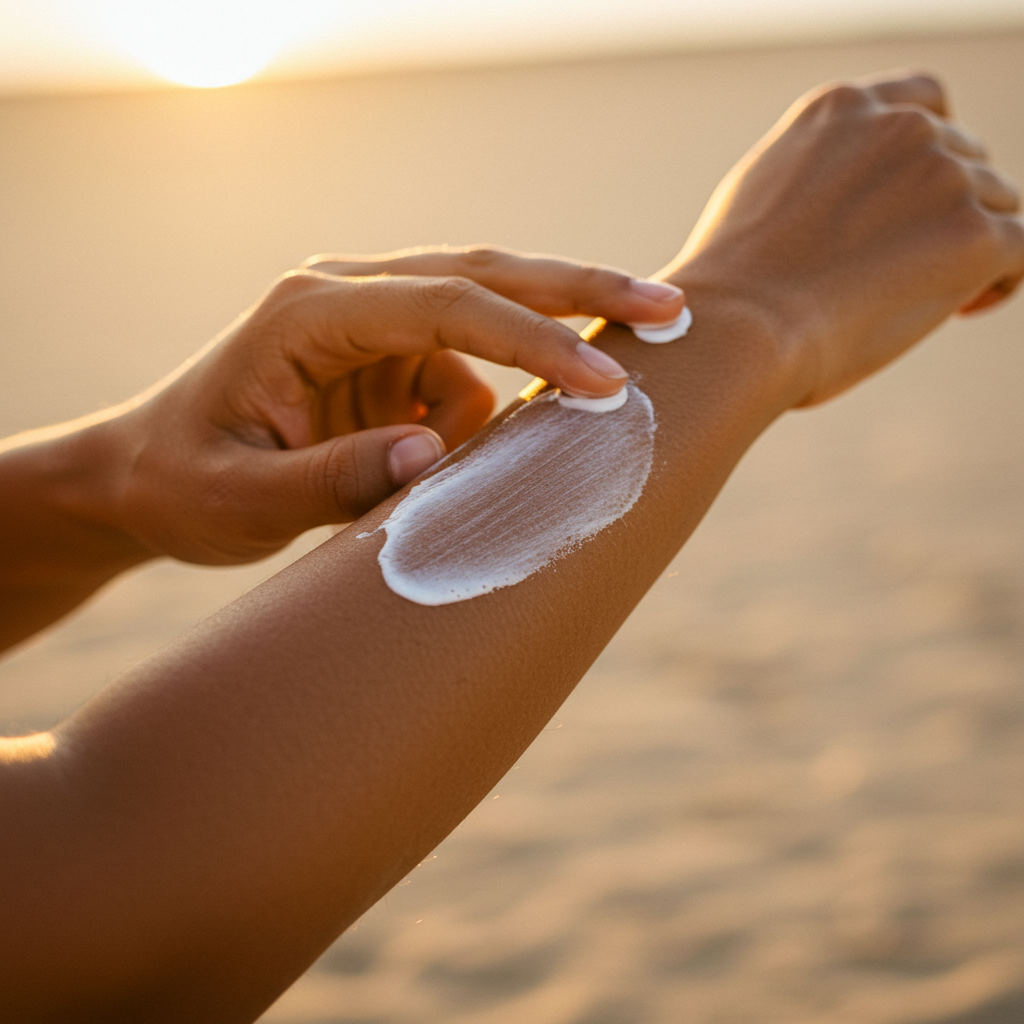Taking proper care of your skin means understanding its biggest environmental challenge: the sun. While some people tan easily and historically haven’t worried much about sun damage, the impact accumulates over a lifetime. As skin ages, the effects of sun exposure become more apparent, highlighting the critical need for consistent protection. This guide delves into the essential principles of sunscreen to help you safeguard your skin effectively.
Understanding how the sun affects your skin is the first step toward protecting it. Sunlight contains different types of ultraviolet (UV) radiation, and two are primarily responsible for skin damage: UVA and UVB rays.
Understanding UV Rays: UVA vs. UVB
Think of UVB rays as the ones that cause sunburns. They primarily affect the outer layer of skin. While causing redness and pain, UVB rays also contribute significantly to tanning, the development of brown spots, and uneven skin tone. Crucially, UVB exposure is a major factor in the development of skin cancer.
UVA rays are more insidious because you don’t feel them burning in the same way. These rays penetrate much deeper into the skin’s layers. UVA exposure is a primary driver of premature aging, leading to wrinkles, sagging skin, and loss of elasticity. Like UVB, UVA rays also play a substantial role in causing skin cancer. Effective sun protection must shield against both.
Decoding Sunscreen Labels
Navigating the sunscreen aisle can feel confusing. Labels feature terms like SPF and “Broad Spectrum.” Knowing what these mean is vital for choosing the right product.
What Does SPF Really Mean?
SPF stands for Sun Protection Factor. This number primarily measures protection against UVB rays – the burning rays. An SPF number indicates how much longer your skin should be protected from sunburn compared to having no sunscreen on. For example, if your skin typically burns after 20 minutes in the sun, an SPF 15 should theoretically allow you to stay in the sun 15 times longer without burning (20 minutes 15 = 300 minutes, or 5 hours).
However, this is a simplified model and real-world conditions vary greatly. More importantly, SPF isn’t a linear measure of protection. SPF 15 blocks approximately 93% of UVB rays. SPF 30 blocks about 97%. SPF 50 blocks roughly 98%. SPF 70 might block 98-99%. The increase in protection becomes minimal after SPF 30, though higher SPFs offer a little more buffer against imperfect application. Using a higher SPF product alongside a lower one offers no greater protection than the highest SPF used alone.
The Power of Broad Spectrum
SPF alone is not enough because it mainly addresses UVB. To protect against the deep-penetrating UVA rays that cause aging and contribute to skin cancer, you need a sunscreen labeled “Broad Spectrum.” This indicates the product offers protection against both UVA and UVB rays. Always choose a broad-spectrum sunscreen with an SPF of 30 or higher for adequate protection.
Choosing Your Sunscreen: Chemical vs. mineral
Sunscreen formulas fall into two main categories based on how they work: chemical and physical (also called mineral). Each type offers effective protection when used correctly, but they function differently.
How Chemical Sunscreens Work
Chemical sunscreens contain organic compounds that absorb UV rays as they hit the skin. These chemicals then convert the rays into heat, which is released from the skin. Common active ingredients include oxybenzone, avobenzone, octinoxate, and octisalate. These formulas are often lighter in texture and rub into the skin without leaving a white cast.
How Mineral Sunscreens Work
Mineral sunscreens, on the other hand, use mineral compounds – primarily zinc oxide and titanium dioxide. These minerals sit on the surface of the skin, creating a physical barrier that deflects and scatters UV rays away from the skin like tiny mirrors. They offer broad-spectrum protection inherently if formulated correctly. Mineral sunscreens are often preferred for sensitive skin but can sometimes feel thicker or leave a visible white residue, although modern formulations have improved this.
Potential Issues with Mixing
Be cautious when combining different sunscreens or mixing sunscreen with other skincare products or makeup. A study highlighted a potential issue where a chemical sunscreen became significantly less effective against UVA rays when mixed with zinc oxide. This suggests that combining formulas with different active ingredients could compromise their intended protection. Stick to one broad-spectrum product and apply other products separately.
Beyond the Bottle: Application & Usage Tips
Even the best sunscreen won’t protect you if it’s not applied correctly. Many people unknowingly use too little sunscreen or don’t reapply often enough. Proper application is just as important as choosing the right product.
How Much and How Often?
The general recommendation is to use about one ounce (a shot glass full) of lotion to cover your entire body. Applying a thin layer significantly reduces the stated SPF protection. You must reapply sunscreen at least every two hours, or more frequently if you’re sweating heavily or swimming. Water and sweat can wash sunscreen away, even those labeled “water-resistant.”
Sprays vs. Lotions
While convenient, spray sunscreens can be tricky. It’s harder to know if you’ve applied an adequate amount, and there’s a risk of inhaling the product. Many experts suggest rubbing in spray sunscreens after applying to ensure even coverage. Lotions generally provide more reliable coverage because you can see and feel the amount being applied. It’s also worth noting that spray sunscreens can be flammable, requiring caution around open flames.
Expiration Dates & Storage
Sunscreen ingredients can degrade over time, making them less effective. Always check the expiration date on the bottle. If there isn’t one, a general rule is to discard sunscreen three years after purchase. Storing sunscreen properly, away from direct sunlight and excessive heat (like a hot car), also helps maintain its stability and efficacy.
Addressing Sunscreen Safety Concerns
The increasing use of sunscreen has also brought greater scrutiny to its ingredients. Concerns exist regarding the safety of certain chemicals for human health and the environment.
Controversial Ingredients
Numerous studies have raised questions about the potential health effects of some chemical UV filters, such as oxybenzone. Concerns range from hormone disruption to skin allergies. While regulatory bodies continue to review the data, some consumers prefer to avoid these chemicals. Lists of ingredients to potentially avoid are available from health and environmental organizations.
Environmental Impact
Certain chemical sunscreen ingredients, notably oxybenzone and octinoxate, have been linked to harm to marine life, particularly coral reefs (sometimes referred to as “reef-safe” concerns). This environmental impact has led some locations, like Hawaii, to ban sunscreens containing these chemicals. This highlights the broader implications of our product choices.
Regulatory Differences
Regulatory standards for sunscreens vary significantly between countries. In the United States, sunscreens are regulated by the FDA, primarily as cosmetics or non-prescription drugs, depending on claims. In contrast, countries like Canada classify sunscreens more strictly as drugs, potentially leading to different standards for safety and efficacy testing and ingredient approval. These differences contribute to the complexity consumers face when choosing products.
Other considerations include the use of nanoparticles (designed to improve texture or efficacy), SPF boosters, and fragrances. Fragrances can contain numerous chemicals not individually listed due to trade secret laws, potentially causing irritation or allergic reactions for some individuals.
Sun Protection Year-Round & Other Methods
Sun protection isn’t just for summer beach days. UV rays are present year-round, even on cloudy days and during winter. It’s recommended that everyone use sunscreen daily, especially on exposed areas like the face, neck, and hands.
Individuals with specific risk factors, such as very pale skin, blonde or red hair, a personal history of skin cancer, or a strong family history of the disease, should be particularly diligent with sun protection measures.
Sunscreen is a crucial part of a comprehensive sun safety strategy, but it’s not the only tool. Other protective measures include:
Avoiding peak sun hours (typically mid-afternoon).
Wearing protective clothing, including long sleeves, pants, wide-brimmed hats, and UV-blocking sunglasses.
Seeking shade whenever possible, whether under trees, umbrellas, or building overhangs.
Making informed choices about sunscreen involves considering efficacy, application, and ingredient safety for both personal health and the environment. Consumers can influence the market by demanding safer, effective products. Resources like the Environmental Working Group (EWG) sunscreen guide, along with government sites like the FDA and NIH, and consumer advocacy groups can provide valuable information to help you make the best decisions for protecting your skin.
Ultimately, protecting yourself from the sun’s harmful rays is a fundamental step in preventing sunburns, reducing the risk of skin cancer, and minimizing premature skin aging. It’s an important personal choice that benefits your health long-term.
Frequently Asked Questions
What is the key difference between UVA and UVB rays, and how does ‘Broad Spectrum’ address this?
UVA rays penetrate deeply, causing aging and contributing to skin cancer, while UVB rays cause sunburns and are a primary driver of skin cancer. SPF primarily measures protection against UVB. A sunscreen labeled ‘Broad Spectrum’ is formulated to protect against both UVA and UVB rays, offering more comprehensive sun damage prevention for your skin.
Considering safety concerns mentioned, should I choose chemical or mineral sunscreen?
Both chemical and mineral sunscreens are considered effective for UV protection when used correctly. Concerns about certain chemical filters exist regarding potential health and environmental impacts. Mineral sunscreens (containing zinc oxide and titanium dioxide) are often preferred by those seeking to avoid certain chemicals or with sensitive skin, as they work by physically blocking rays. Research ingredients and decide based on your personal preferences and priorities, considering resources like the EWG guide.
Besides SPF and ‘Broad Spectrum,’ what are the most critical things to know about applying sunscreen correctly?
Choosing a high SPF (30+) broad-spectrum product is essential, but application is key. You must use a sufficient amount (about a shot glass for the body) and reapply every two hours, or immediately after swimming or heavy sweating. Check the expiration date, store sunscreen away from heat, and consider that lotions may offer more reliable coverage than sprays due to ease of application.
Word Count Check: 1150 words




